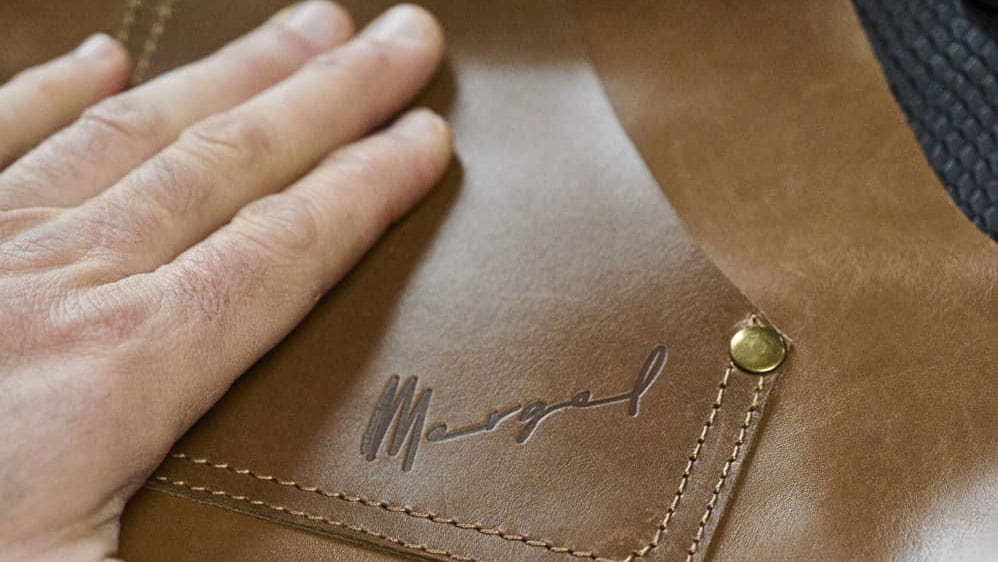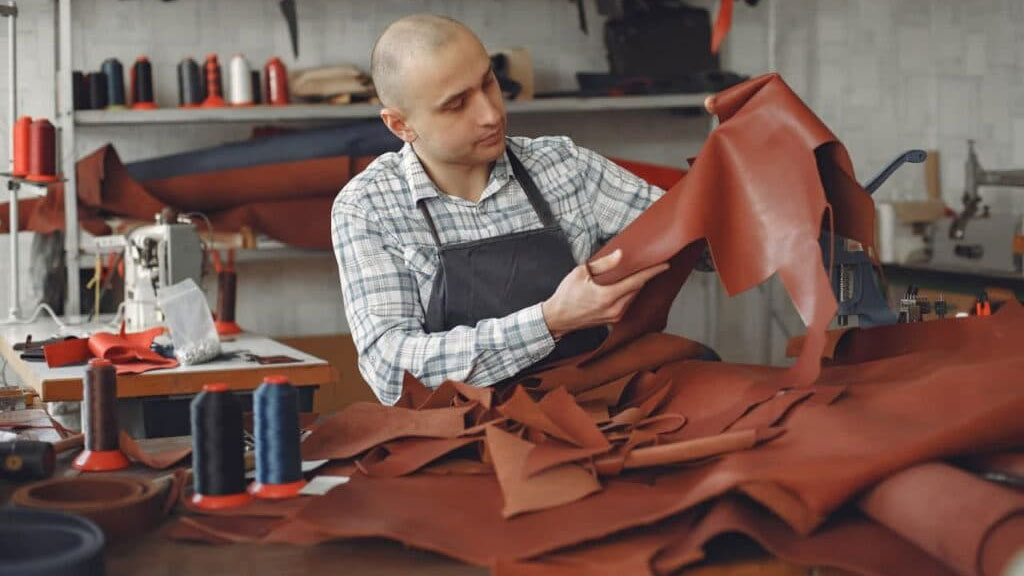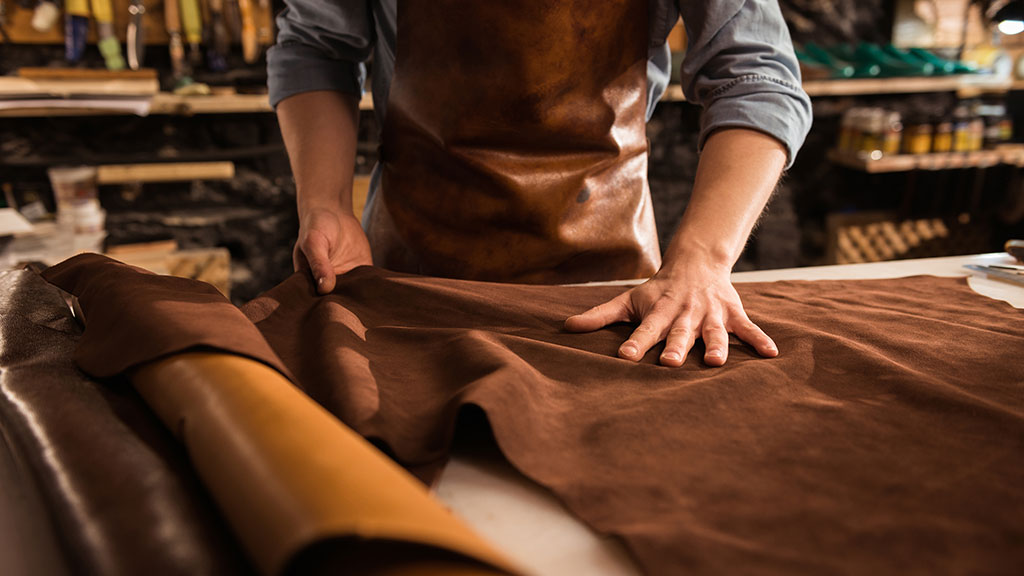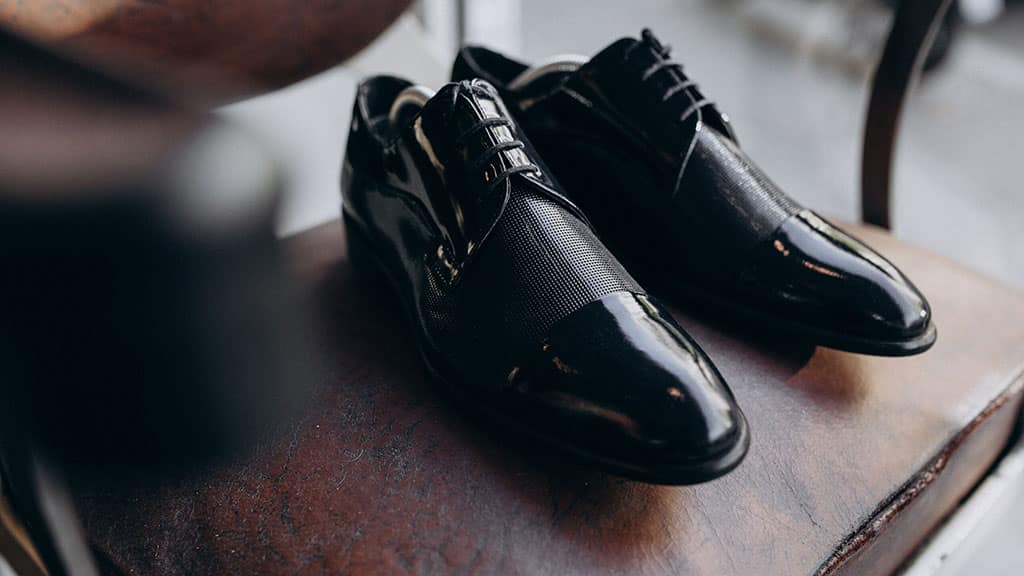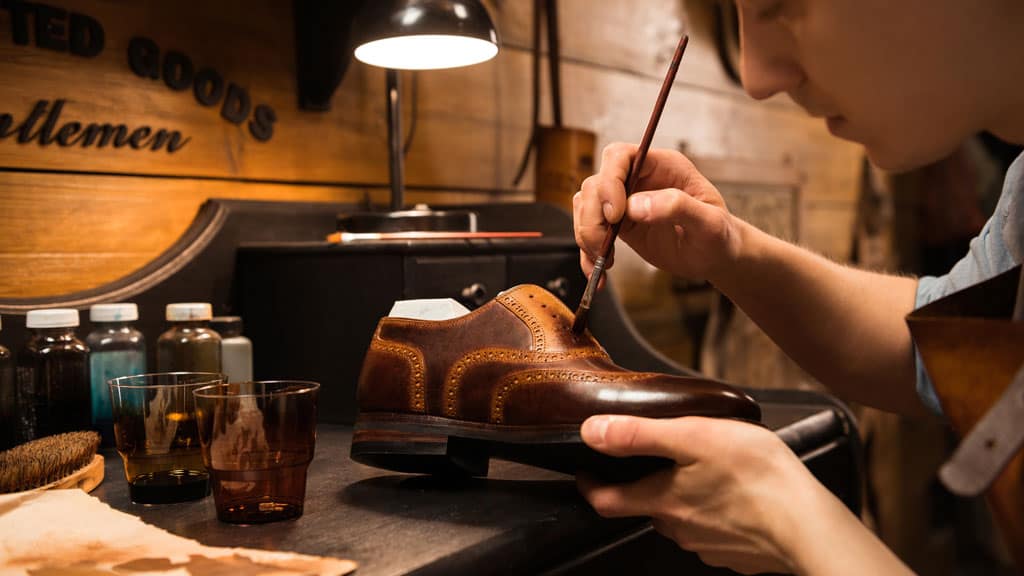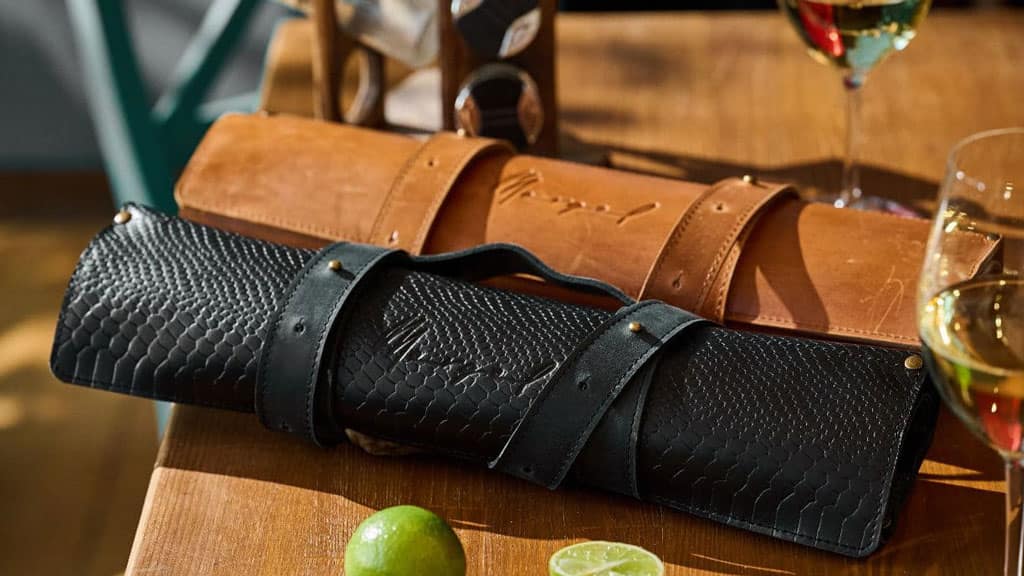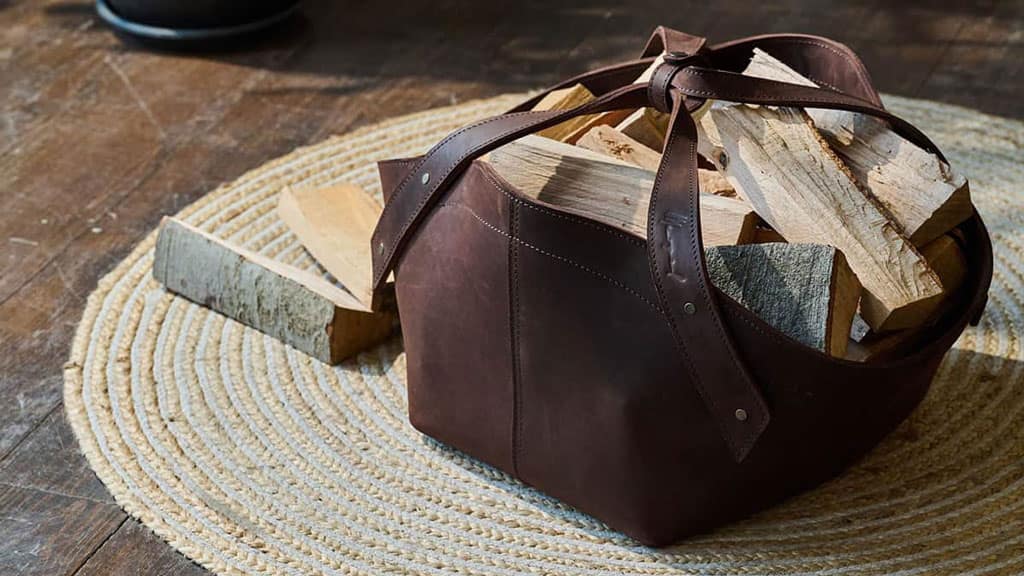Craftsmanship, the quality of the material and the right leather cleaner are factors that have a direct impact on the appearance, functionality and durability of products. When leather is mentioned, most people think of car seats and motorcycle boots. But there are many other products that can be made from leather: Wallets, belts, shoes, dog products, bracelets and collars, orthopedic products, book covers, accessories, barbecue aprons, knife pouches, beer bottle holders, etc. Each product requires special care and cleaning because leather comes in many different forms. How to properly clean and store leather goods, and what not to do, is covered in our article.

Different types of leather and their characteristics
Leather is a natural material that is processed into a durable product with high utility value. The original animal skin is given new, precisely defined properties through chemical and mechanical treatment. The tanner influences these properties. By the way, this specialist is also an animal rights activist, albeit indirectly. The tanner is interested in healthy and undamaged animal hides. This is achieved by keeping the animals in a species-appropriate environment.Smooth Leather
These leathers are used for functional clothing, accessories and of course for the furniture industry. Smooth leather is mainly obtained from calves, cattle or pigs. There are 2 main types of smooth leather:- Open-pored – this is usually called aniline leather. The open pores give it a very natural look. All flaws are visible in this material, but it retains a special naturalness. Home care products for leather can have a negative effect on the appearance of the material due to its high porosity and absorbency. It is therefore advisable to choose special products that not only clean but also do not clog the pores.
- Coated Leather – Leather that is pigmented during processing, making it resistant and water-repellent. You can easily distinguish this material from untreated leather by placing a drop of water on the surface; if the water runs off and is not absorbed, it is leather with closed pores. This material is easy to clean, both at home and with special cleaning products.
Suede and Nubuck leather
Suede is an animal skin that has been tanned with fat. It has a low, dense pile and is pleasant to the touch. Despite its many advantages, this type of leather has one major drawback: the surface is not water-repellent. Therefore, suede shoes should only be worn in dry weather. Unfortunately, no one is immune to the sudden onset of rain or snow, so it is better to start suede care with our simple recommendation: Before you wear it for the first time, impregnate it with a waterproofing agent. This will also provide additional protection against deep soiling. Nubuck is a finely tufted material with a buffed surface. This makes the surface rough and velvety, but smoother than suede. This leather is preferred for high-end fashion shoes and similar products because it looks very elegant, is comfortable to wear and is durable. Because nubuck leather is not water-resistant, it should be treated with a waterproofing spray before first use.Patent Leather
Patent leather is shiny leather coated with a lacquer. It is a popular material for outerwear and underwear, hats, accessories and shoes. Patent leather emphasizes the individual style and becomes a spectacular accent in the appearance. Despite its shiny surface, this material does not require any special care and keeps its perfect appearance for many years. It is sufficient to avoid extreme conditions (e.g. temperature changes), mechanical damage and contact with dyes.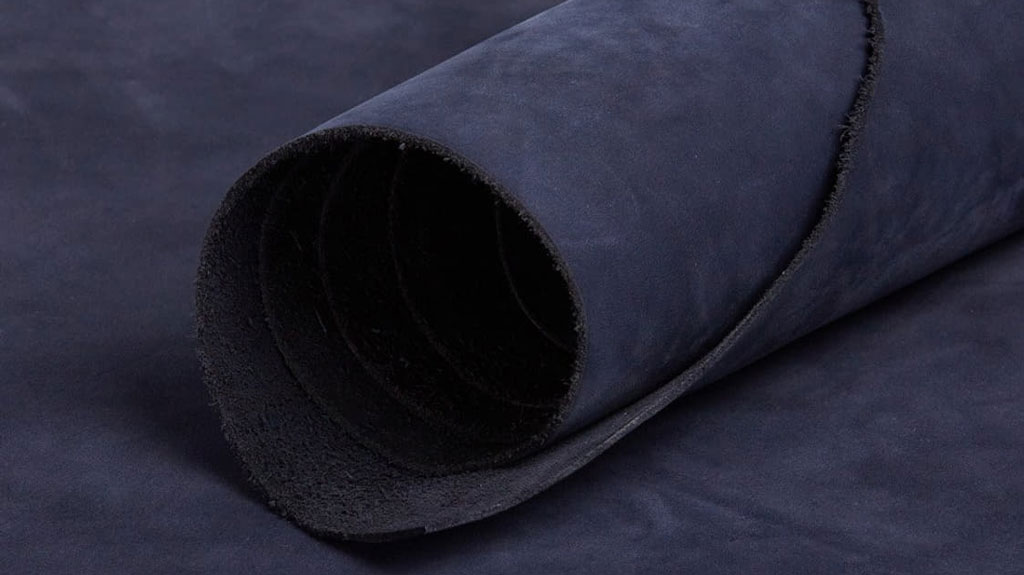
The basics of leather care
Leather care tips start with a basic rule: regular and gentle care is better than infrequent and then excessive care. To maximize the life of your leather goods, simply remove dust and dirt on a regular basis, treat with leather care products, and store in the right conditions. Today, there is a wide range of specialized leather care products on the market: Brushes, cloths, sprays, creams, milk, etc. However, household products found in every home are often sufficient. If the product is very dirty or damaged, we recommend that you contact a professional.Smooth leather care
Natural leather is a fine, durable and long-lasting material. But all products need to be cared for properly. Normally, smooth leather is easy to clean and store. In the fall, leather clothing is often put away and stored. This includes leather jackets and motorcycle gear. To protect these garments from mildew or even rot, the leather must be well ventilated. Normally, air naturally penetrates the leather and allows moisture to evaporate. However, when leather goods are packed tightly in plastic bags or boxes, the material suffocates. Leather should be stored in a natural environment, never in plastic, but in a dry room. It is best stored in a special leather bag or wrapped in a breathable material.How to clean smooth leather?
Start by cleaning smooth leather in small, inconspicuous areas with care products. For stubborn stains, dampen cotton cloths and use light pressure and circular movements to remove the dirt. Demineralized water and curd soap work wonders on the skin. This process can be repeated several times. Smooth leather BBQ aprons, knife pouches and beer mats will stay smooth for a long time with proper care. Stains, splashes or grease can be easily removed with a damp cloth. The high quality of the leather prevents dirt from penetrating the fibers. Stubborn stains can be removed with a leather cleaner. To avoid unsightly stains, never clean with an excessively damp cloth.Care Tips
Smooth leather products dry out, so the skin needs to be moisturized, especially when exposed to sun, wind and weather. In such cases, experts recommend the use of skin oils to restore the skin’s natural moisture balance. Always spread the oils evenly over the leather to avoid stains. Leather aprons can be regularly wiped with leather care products to keep them smooth and shiny for a long time. Creases, scratches and wrinkles can be smoothed out with a cloth over low heat. Leather conditioners should be applied evenly.Suede Care
Leather care products include useful and effective products such as waterproofing. Because suede is a very delicate leather, experts strongly recommend the use of waterproofing. It should only be applied to areas that are prone to flaking. Unlike smooth leather, suede and nubuck should not be treated with fats or oils, as this can cause the structure of the material to break down and the fibers to stick together. In general, it is better to use only mechanical cleaners for this material. As with smooth leather goods, they should be stored in a dry, well-ventilated room without the use of polyethylene film or other airtight materials.Cleaning Suede and Nubuck Leather
Suede should not be cleaned with water. If no other option is available, a special suede cleaner should be used. Dust and light dirt should be carefully removed with a special soft leather brush. If stains need to be removed, use a special brass brush or eraser, which can be purchased at a specialized store. Wipe the stain thoroughly but carefully so as not to damage the surface of the material. To clean nubuck leather, use only products specifically designed for this type of leather. Remove dust and light dirt with a dry cloth or soft brush. Then apply a conditioning product. If your nubuck shoes get wet, dry them in a special dryer or place paper/newspapers inside. Do not place your shoes near a heater or fireplace as the hot air will damage the material.Care of suede leather products
Rough leathers (nubuck, suede, velours) are tanned or unprotected leathers with a natural and warm surface. These leathers become discolored if they are protected from drying out with fats, oils or care lotions. A care spray with the necessary moisture content and UV protection is recommended for suede leather. It protects the leather from fading and maintains its elasticity. In the event of heavy use (sunlight, heat, frequent use), the leather should be re-treated after one year at the latest. Depending on the wear, heat and light intensity, the leather should be re-treated every 3 to 12 months.Patent Leather Care
A characteristic feature of this material is its shine. It is therefore advisable to rub patent leather regularly with a suitable vegetable oil or e.g. Vaseline. Apply a small amount to a cotton cloth and rub the item, then rub again with a dry cloth. The more the leather is used, the more often it should be moistened. Do not use hard brushes to clean lacquered accessories, shoes and garments as they can damage the shiny surface of the material. When choosing special care products, use those recommended for this type of leather.Cleaning Patent Leather
Dust and light soiling can be safely removed with a dry or damp cloth. The cloth may also be moistened with a mild, non-aggressive cleaning agent. Since these products cannot be washed, regular, proper and gentle care is essential to maintain their appearance and functionality. A special cream, milk or oil can be used to restore the shine and elasticity of lacquered leather.Storage and Care
The leather care methods for this type of leather are almost identical to the recommendations above. Avoid temperature changes and prolonged exposure to sunlight. Clean and moisturize the leather regularly with appropriate products. Store in dry, well-ventilated areas, as natural materials can become moldy and deteriorate if stored in an inappropriate location for long periods of time. To preserve its beautiful color, do not use chemicals or other aggressive cleaning agents.Caring for different types of leather products
- Shoes. Proper care of leather shoes begins before you wear them for the first time. The first step is to waterproof the shoes. Waterproofing sprays are often used for this purpose. Regardless of the type of leather your shoes are made of, they should be cleaned with appropriate products as soon as they get dirty. Regular use of leather grease and timely cleaning will ensure a long life for your shoes.
- Accessories (gloves, mobile phone cases, aprons, plate holders, belts, etc.) Leather goods can be easily cleaned with water and a cloth, sometimes with soapy water. For stains, you can use saddle soap or safe home remedies.
- Clothing. Leather care for jackets, pants or vests is not difficult. Some types of leather can even be washed if you follow the manufacturer’s recommended washing and drying instructions. For light soiling or regular maintenance, simply wipe with a soft, damp cloth.
- Bags, suitcases. If you use your bag frequently, make sure it is not only clean and properly stored, but also regularly moisturized and UV protected, as sunlight will affect the color and durability of the material. Use lotions, lubricants, oils and other care products.
Cleaning and caring for leather with home products
- Household chemicals and hygiene products – Weak soap solutions work well for cleaning leather goods. Dilute a small amount of shower gel, shampoo, dishwashing liquid or laundry soap with warm, boiled or distilled water. Wipe the leather item with the solution and allow to dry.
- Ammonia, vinegar – these agents are often used to remove all types of stains when caring for leather handbags. In order not to damage the leather, you should not apply them yourself, but prepare a solution and wipe with a cotton cloth soaked in it. A few drops of ammonia in warm water are suitable for regular care of leather goods.
- Absorbent materials (starch, baking powder, dry shampoo, baby powder, chalk) – simple ingredients that perfectly remove grease stains and absorb excess moisture. Apply one of the above products to the stain and leave on for a few hours.
Common mistakes and how to avoid them
Without knowledge of the different types of leather and their characteristics, it is often difficult. We have collected the most common mistakes made when cleaning, storing and caring for leather goods:- Applying oils, greases, creams and other products to suede – this affects the appearance of the material;
- Storing leather in bags or other hermetic covers – the natural material needs constant access to air;
- Smoothing products by force – any attempt to stretch or shape the leather itself can deform it;
- Applying cream to dark leather on colored or white leather – it is better to choose a universal colorless product;
- Rubbing the place of dirt, strong staining – any aggressive mechanical action has a negative effect on the condition of the material;
- Irregular care – if you remember to clean the shoes once a year, apply a large amount of cream and actively rub, you will only do harm.

